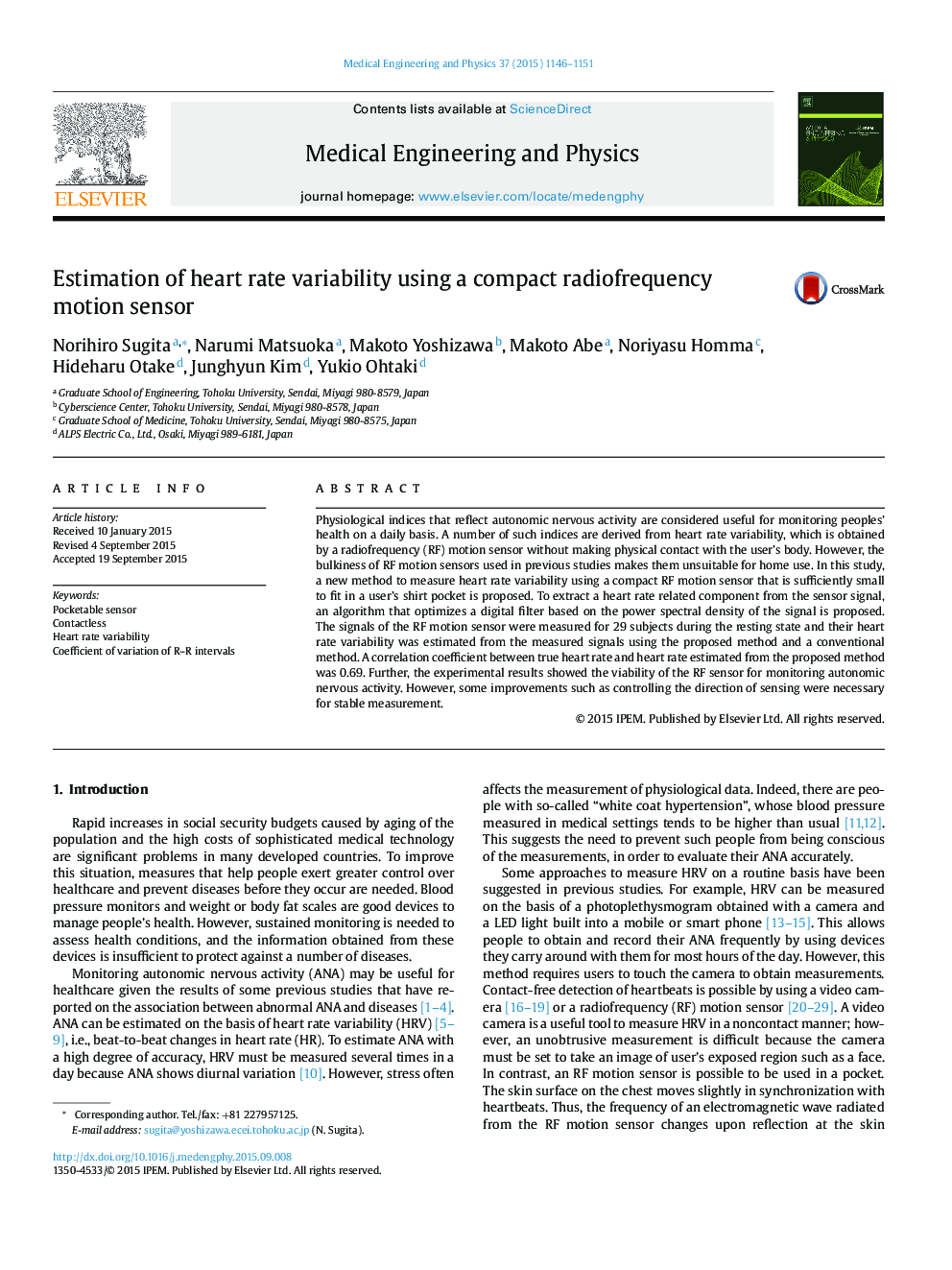| Article ID | Journal | Published Year | Pages | File Type |
|---|---|---|---|---|
| 875690 | Medical Engineering & Physics | 2015 | 6 Pages |
•We developed a compact RF motion sensor that is small enough to use in the chest pocket of a user's shirt or jacket.•We proposed a new algorithm for estimating heart rate variability from the RF motion sensor signal.•A correlation coefficient between true heart rate and heart rate estimated from the proposed method was 0.69.
Physiological indices that reflect autonomic nervous activity are considered useful for monitoring peoples’ health on a daily basis. A number of such indices are derived from heart rate variability, which is obtained by a radiofrequency (RF) motion sensor without making physical contact with the user's body. However, the bulkiness of RF motion sensors used in previous studies makes them unsuitable for home use. In this study, a new method to measure heart rate variability using a compact RF motion sensor that is sufficiently small to fit in a user's shirt pocket is proposed. To extract a heart rate related component from the sensor signal, an algorithm that optimizes a digital filter based on the power spectral density of the signal is proposed. The signals of the RF motion sensor were measured for 29 subjects during the resting state and their heart rate variability was estimated from the measured signals using the proposed method and a conventional method. A correlation coefficient between true heart rate and heart rate estimated from the proposed method was 0.69. Further, the experimental results showed the viability of the RF sensor for monitoring autonomic nervous activity. However, some improvements such as controlling the direction of sensing were necessary for stable measurement.
